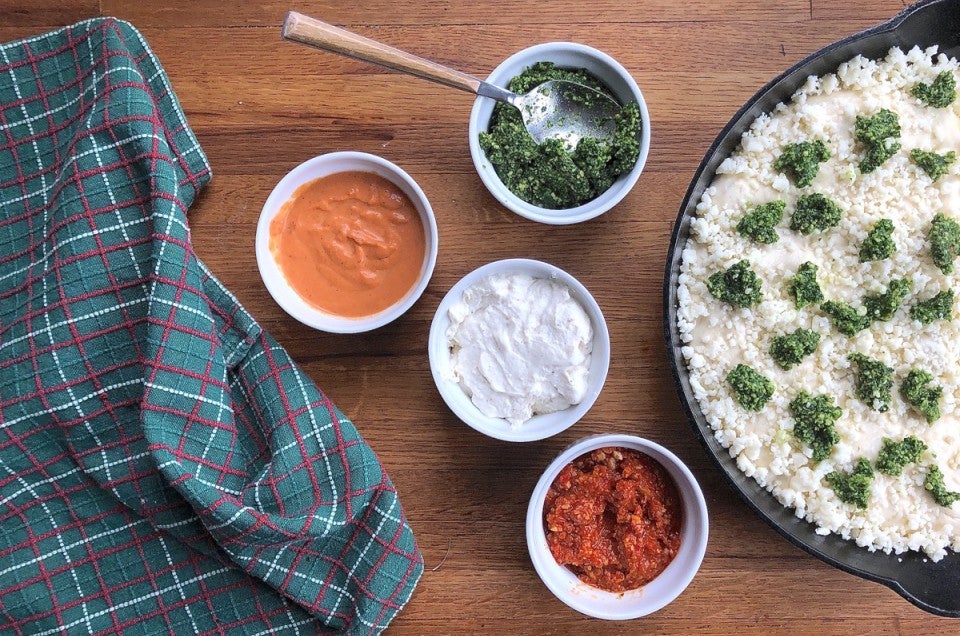


There’s nothing like a pizza with ooey-gooey melted cheese, red sauce, and your favorite toppings (like classic pepperoni). I daresay most of us greet this typical pizza with eager enthusiasm.
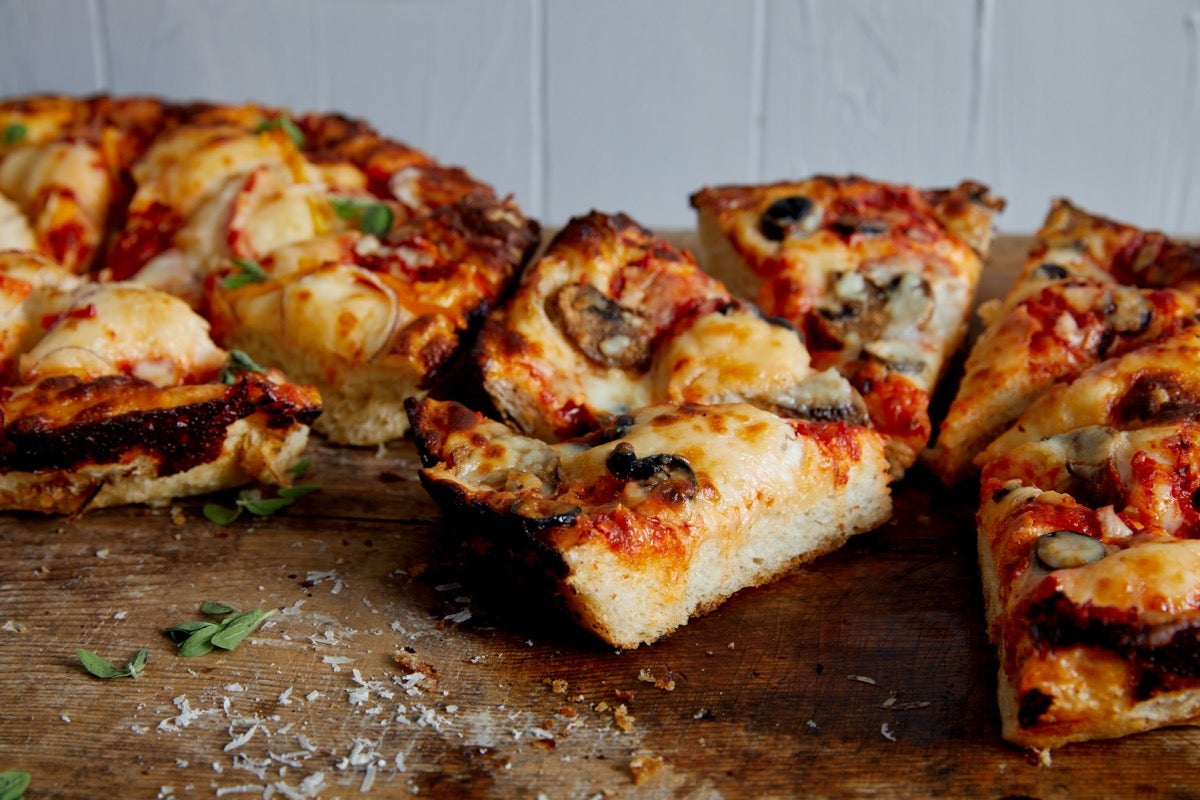
For instance, I love our 2020 Recipe of the Year, Crispy Cheesy Pan Pizza. It checks all the boxes above: melting mozzarella, tomato sauce, toppings of your choice. Thanks to an overnight rise, its thick (though light and airy) crust is packed with flavor. Baked in a cast iron skillet, its bottom and sides are incredibly crunchy. And cheese applied over the entire top surface, edge to edge, becomes a crispy, deep-brown umami bomb: this is a no-holds-barred pizza experience.
But this isn't the only pizza I'm hooked on. Just as I have a favorite chocolate cake and vanilla cake and cheesecake, so do I feel a strong allegiance to other types of pizza, among them Grandma, Chicago-Style Deep Dish, and an old favorite, The Easiest Pizza You'll Ever Make.
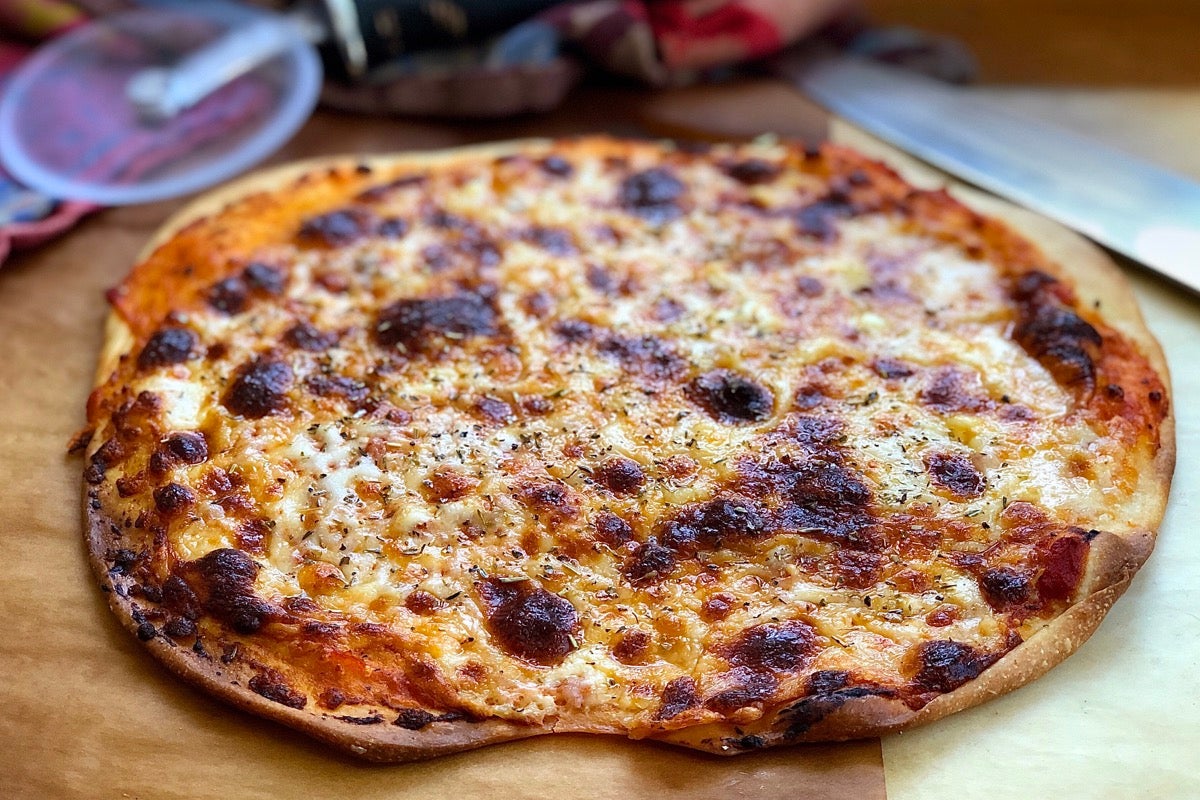
I'm sure you're the same, right? You have certain pizza recipes you turn to over and over again: a thick crust, a thin crust, an easy no-knead. So why would I ever suggest a change to any of these clearly beloved recipes?
Because when you’re a passionate baker, as I know so many of you are, perfect is never enough.
When it comes to pizza, there’s always a new crust, a different pan … even perfection can be tweaked.
So which part of your favorite pizza should we dabble with first? Our Baker's Hotline folks tell me quite a few of you call to ask about pizza sauce options, looking for something beyond the usual red. And traditional though it is, there’s a world of other flavors beyond tomato that pair well with cheese, crust, and your favorite toppings.
Let’s get saucy, shall we?
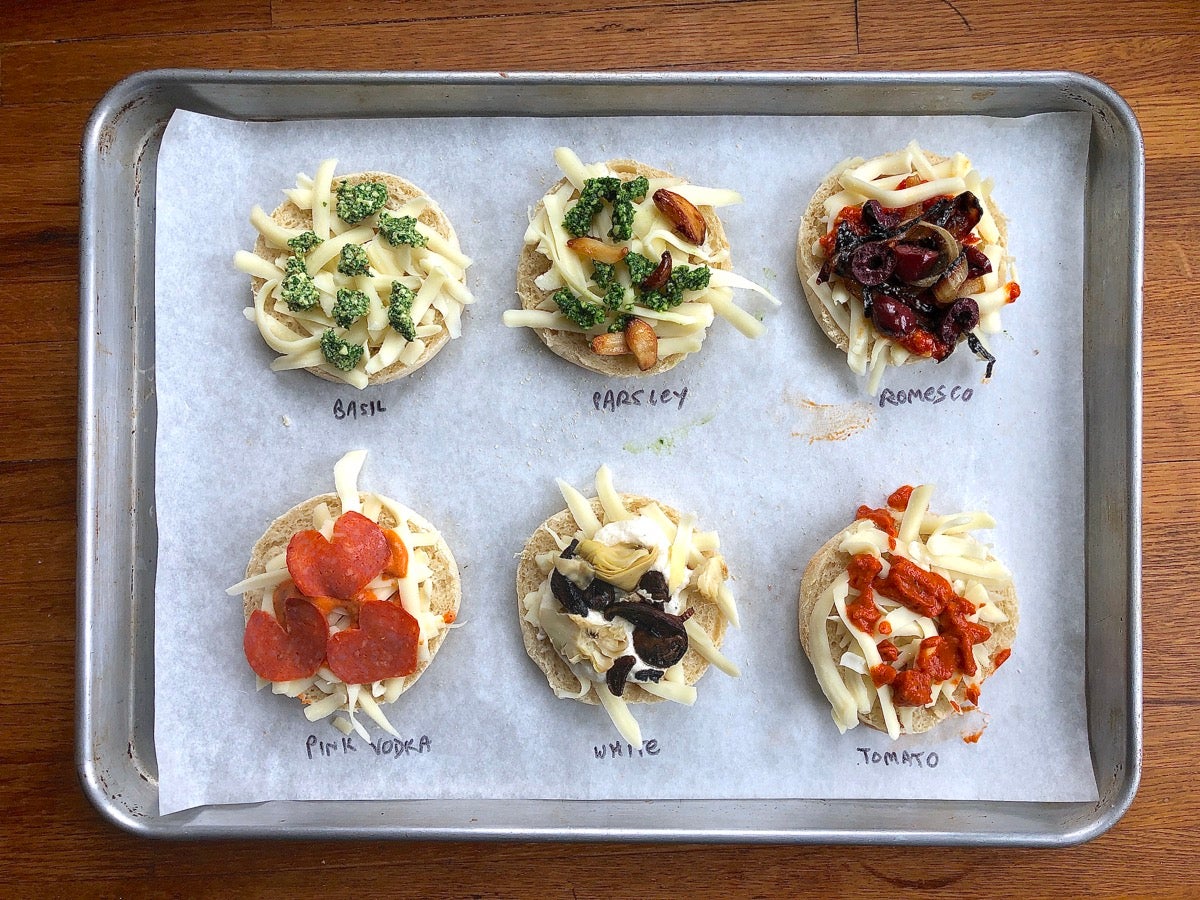
First, decide if you’re making a simple cheese pizza without additional toppings. If so, your sauce can be fairly bold: garlicky, spicy, or strongly scented with herbs. But if you’re adding toppings — especially if they’re rather assertively flavored, like pepperoni, onions, or anchovies — go with a milder sauce.
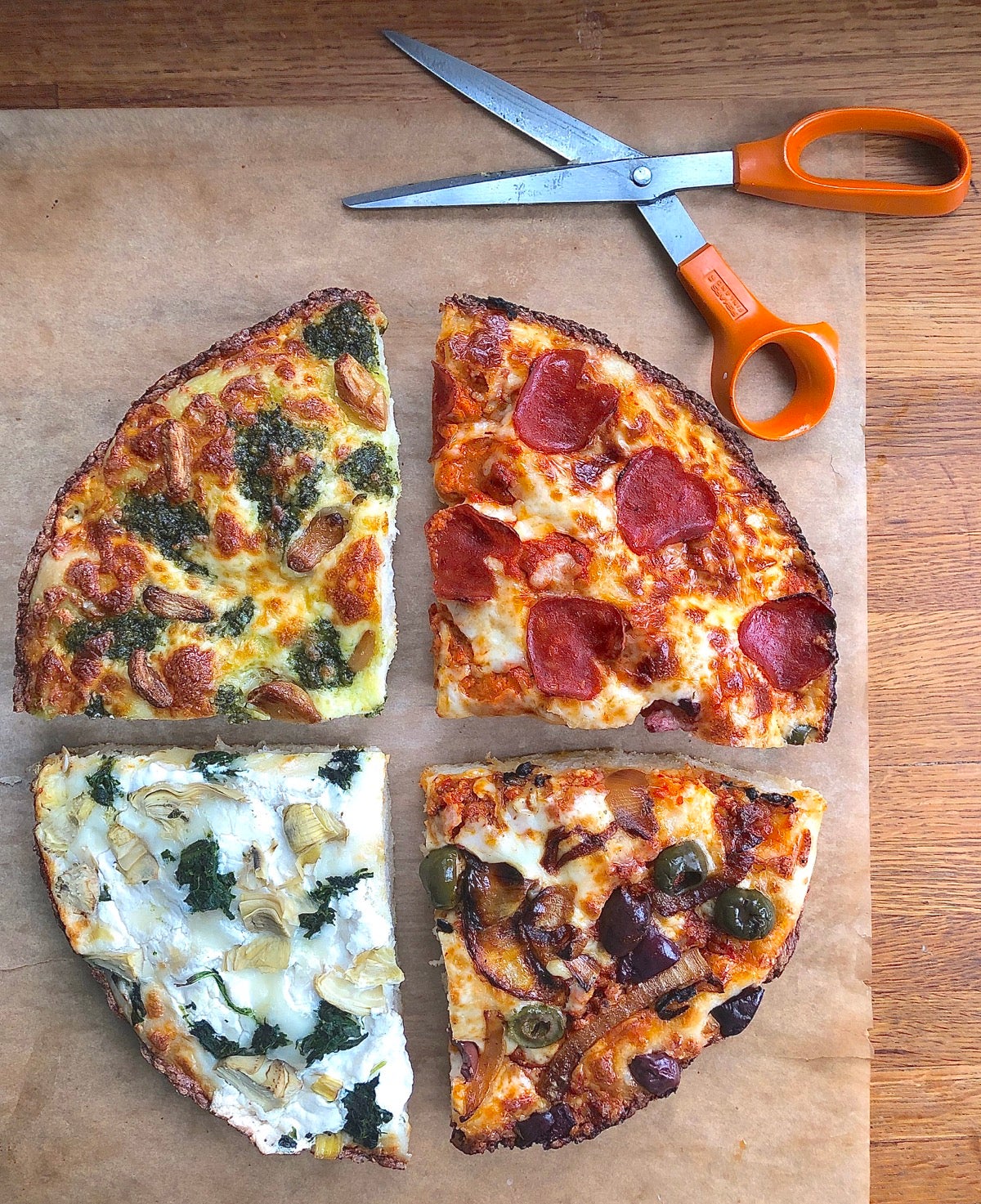
Next, use your imagination to match sauce to toppings. It’s not much of a leap to pair barbecue sauce with chicken, but how about a smoky red bell pepper sauce underneath caramelized onions and meaty kalamata olives? (Don’t worry, we’ll get to that one.) Or basil-y, cheesy pesto with roasted garlic cloves? (That one, too.)
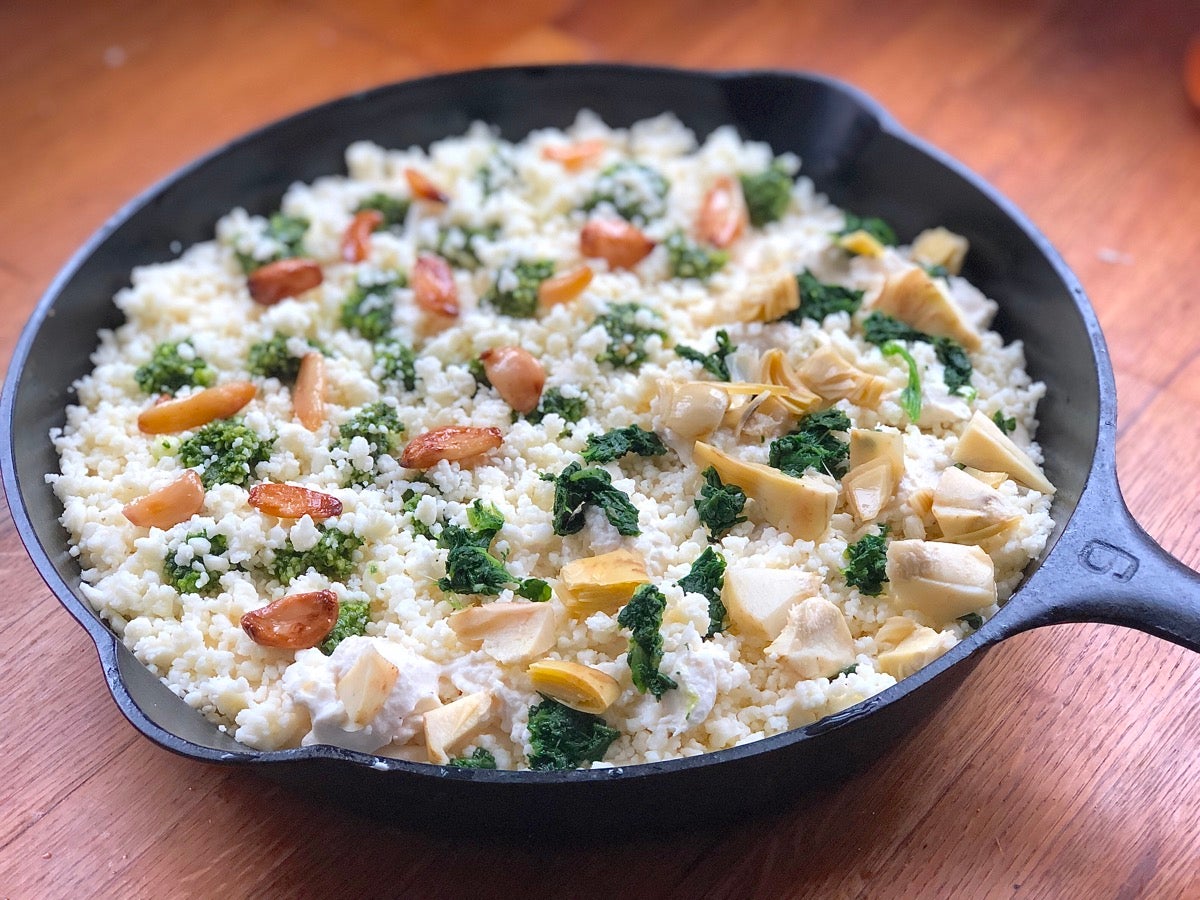
Keep in mind that the amount of sauce you'll need will vary with the size of the pizza, as well as your own personal taste. Some of you like a thick layer of sauce on crust; others prefer just a drizzle. A large Sicilian-style pan pizza demands more sauce than a thin-crust St. Louis. The recipes below yield anywhere from 1/2 cup to 2 cups sauce. If you feel like you need more, simply double or otherwise increase the recipe. If you think you’ll end up with extra sauce, that's fine: you can dip your hot pizza in any excess for another hit of flavor.
Now, despite having said we could probably all afford to look beyond the humble tomato to top our pizzas, tomato sauce is exactly where I'm going to start. First, because it's the basis for one of the succeeding sauces. And second, because I really want to share with you my favorite homemade sauce; since discovering the recipe several years ago, I haven't purchased a single jar of pizza sauce at the supermarket (even when one of the expensive brands is on sale!)
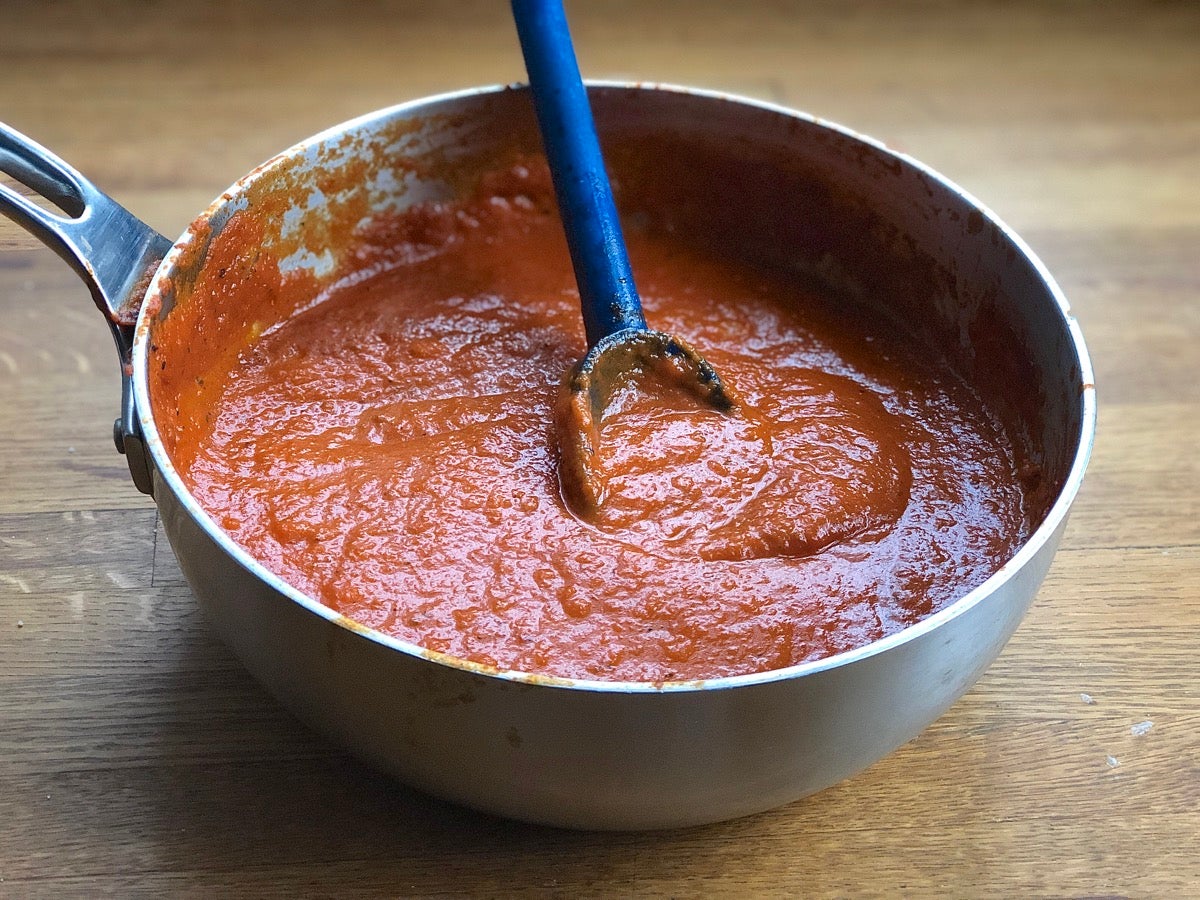
Maybe you already have a favorite basic tomato sauce but if not, you can’t go wrong with this one. Heavily based on a Marcella Hazan classic, it’s smooth, rich, and tomato-y. The secret ingredient? Baking soda, which cuts the assertive acidity of the sauce so its tomato flavor can shine through.
Combine the tomatoes, onion, butter, salt, and 1 tablespoon of the sugar in a heavy-bottomed saucepan. Bring the mixture to a simmer and cook slowly for 45 to 60 minutes, until the onion has softened and the sauce has thickened somewhat.
Remove the sauce from the heat and purée, either in a food processor or using a stick blender (easier). Stir in 1/8 teaspoon of the baking soda; the sauce will lighten in color. Taste the sauce; if it still seems too acidic, add the remaining baking soda and a bit more sugar, if desired. Yield: a generous 2 cups of sauce. Freeze the excess sauce in large-cube ice cube trays, if desired.
Baker’s tip: While Marcella’s original recipe calls for canned San Marzano tomatoes (and they’re certainly good), I’ve found that Muir Glen brand fire-roasted tomatoes are equally tasty; they’re easier to find, and less expensive.
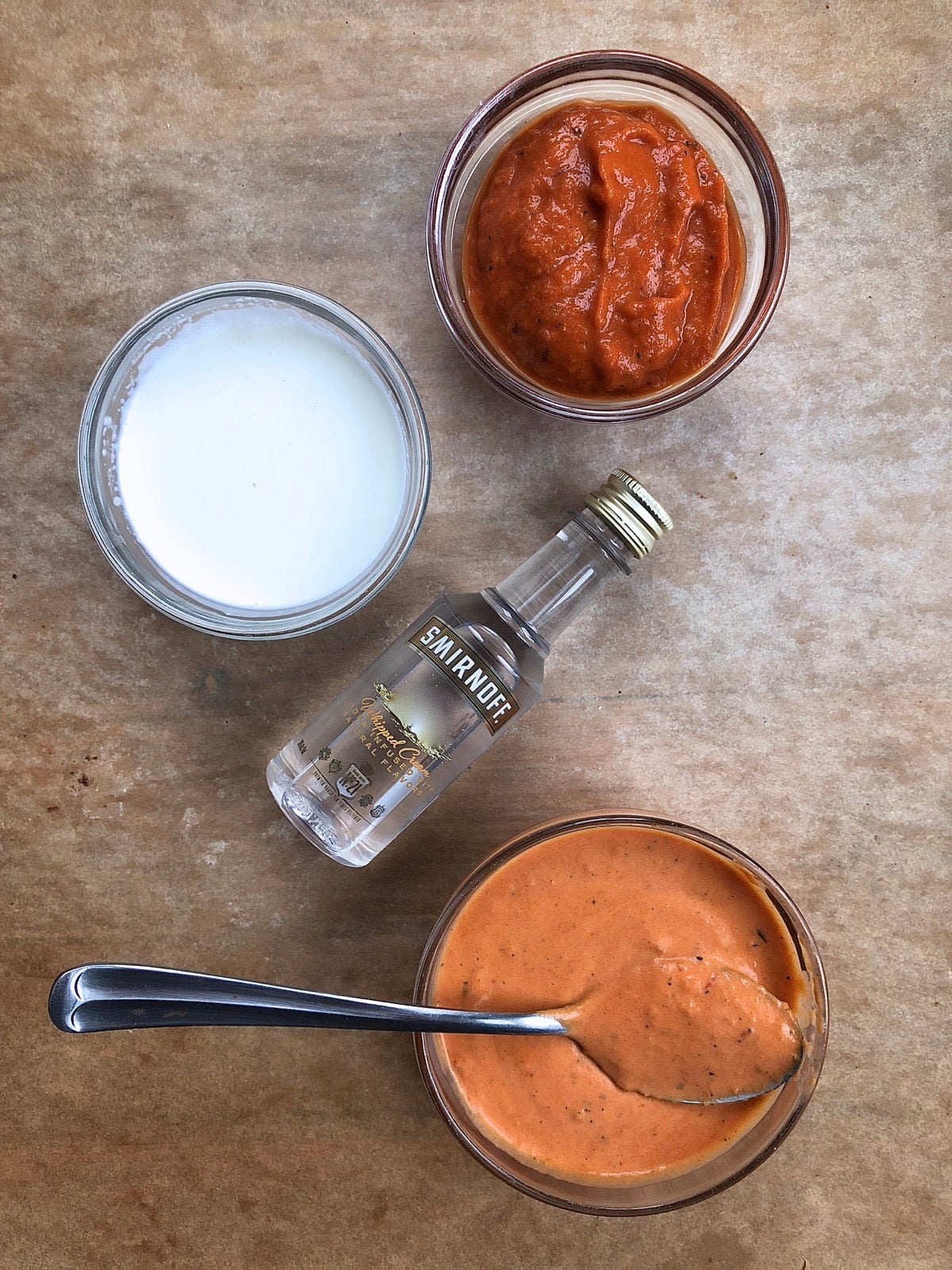
This simple variation, wildly popular on restaurant pasta dishes these days, adds heavy cream and vodka to the tomato sauce above. Mild but rich, it pairs nicely with just about any topping, from spicy pepperoni to roasted potatoes. For those of you into date-night meals, making a pizza with this pink-hued sauce, complete with pepperoni heart cutouts, is a fun project.
*I’m not a huge vodka fan; this amount produces just a hint of flavor in the sauce. But if you like vodka, hey, knock yourself out (not literally!), and add more to taste.
Stir everything together until smooth. Store in the refrigerator until ready to use. Yield: a generous 1/2 cup sauce.
Baker's tip: This sauce is easy to scale up or down. Simply use four parts tomato sauce to one part heavy cream (by weight or volume), plus vodka to taste.
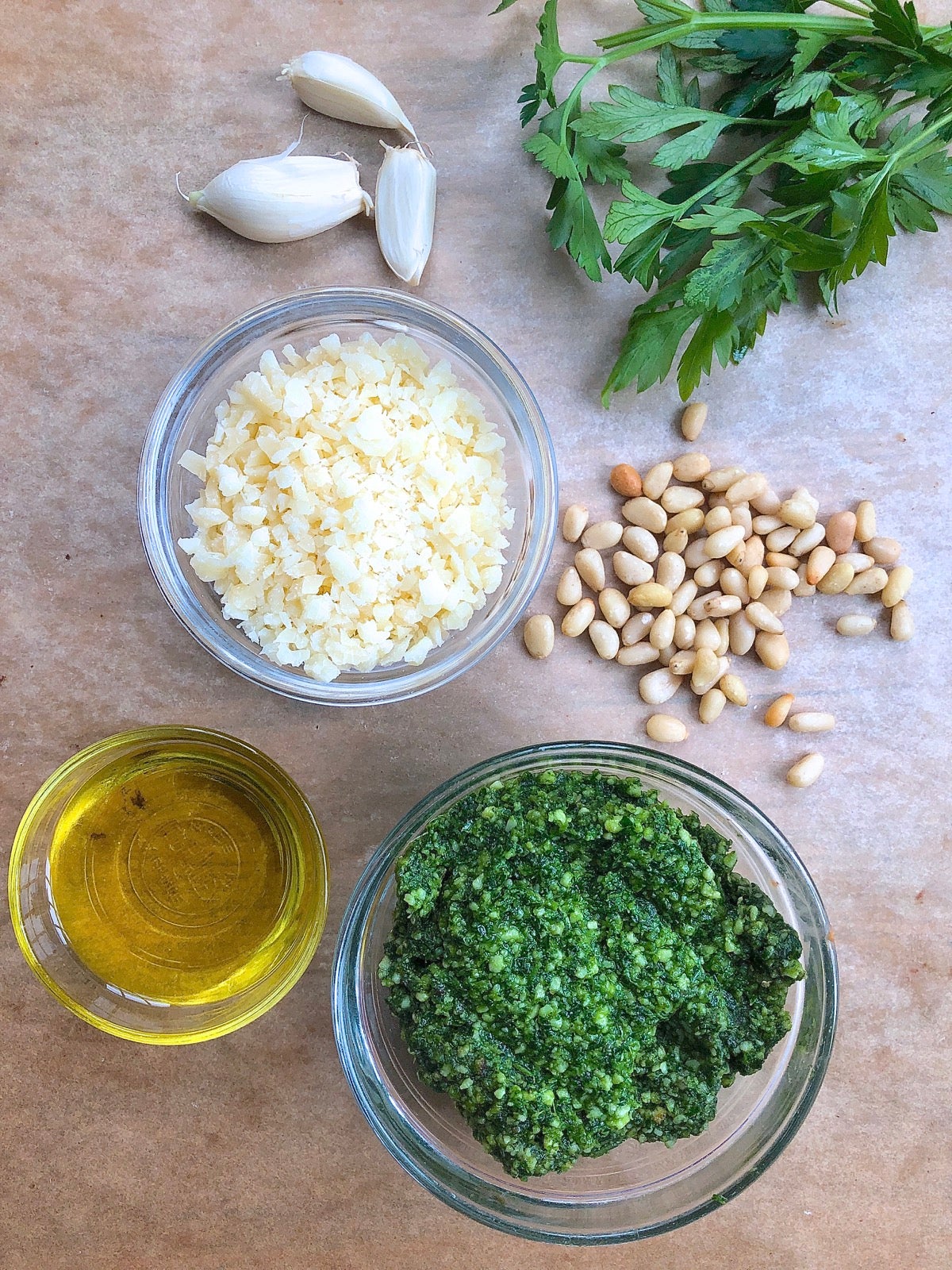
Who doesn’t love herb-y, garlicky pesto? And it’s so simple to make, there’s no reason to purchase one of those expensive little jars of the stuff.
I make basil pesto in summer, when my garden is overflowing with this aromatic herb. But I make parsley pesto year-round: it’s every bit as tasty as the traditional version, and adds brilliant green color wherever you choose to use it — unlike the basil version, which can turn an unappetizing shade of khaki when heated (more on that later).
Using a food processor or blender, process the herbs, cheese, garlic, and nuts with the salt until everything is finely chopped. With the machine running, drizzle in the olive oil. Continue processing until the mixture is as smooth as you like. Some people like their pesto supremely smooth, while others prefer it with a bit of body. Store pesto in the refrigerator until ready to use. Yield: a generous 1/2 cup pesto.
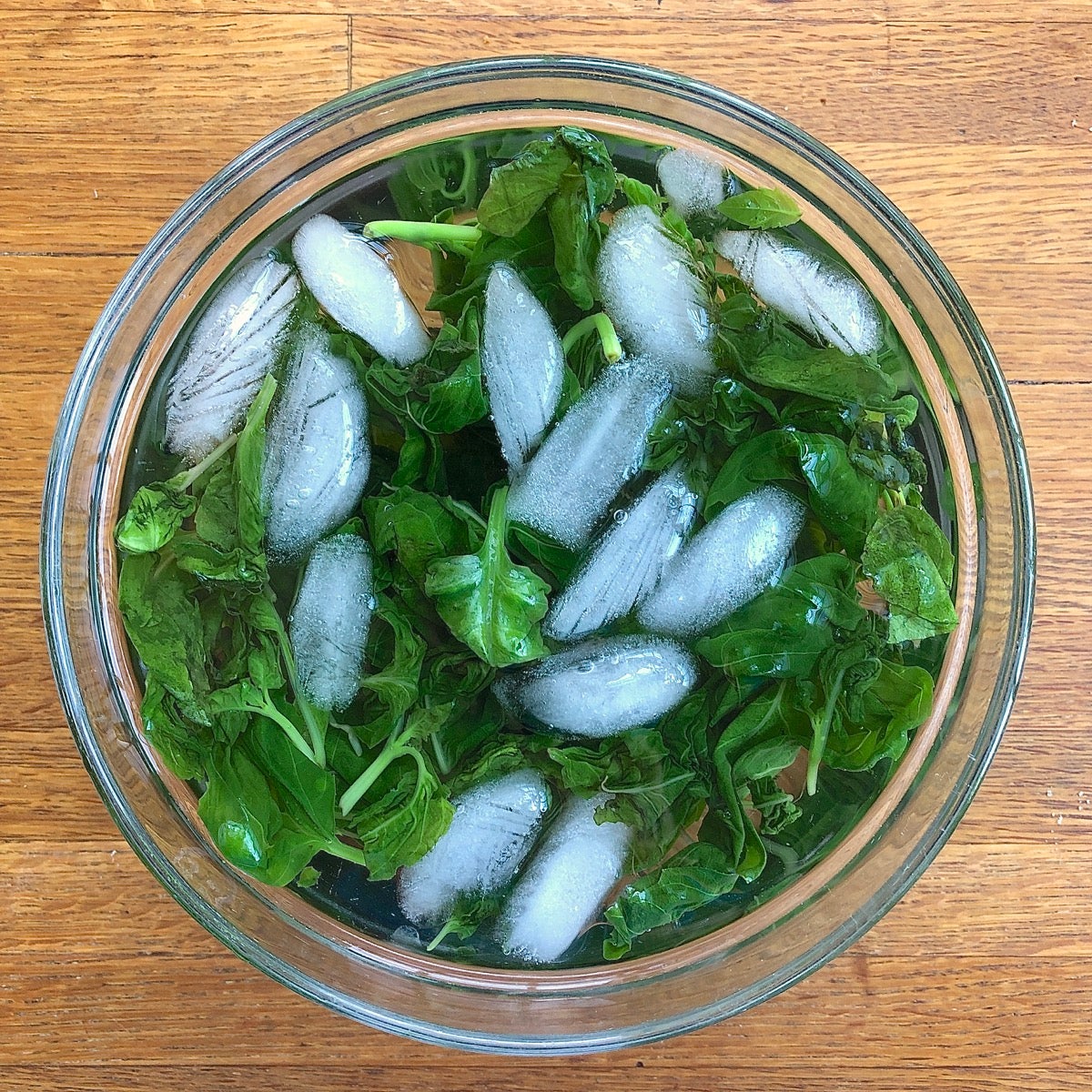
Baker’s tip: Here’s a trick for keeping your basil pesto from turning brown as it sits — or when it’s baked, as it is atop pizza. Simply blanch the fresh basil leaves before using: plunge them (measured for your recipe first) into boiling water for 5 to 10 seconds, drain them, and immediately cover them with ice water. Once cool, squeeze the leaves dry and continue with the recipe. Your basil pesto will stay bright green indefinitely.
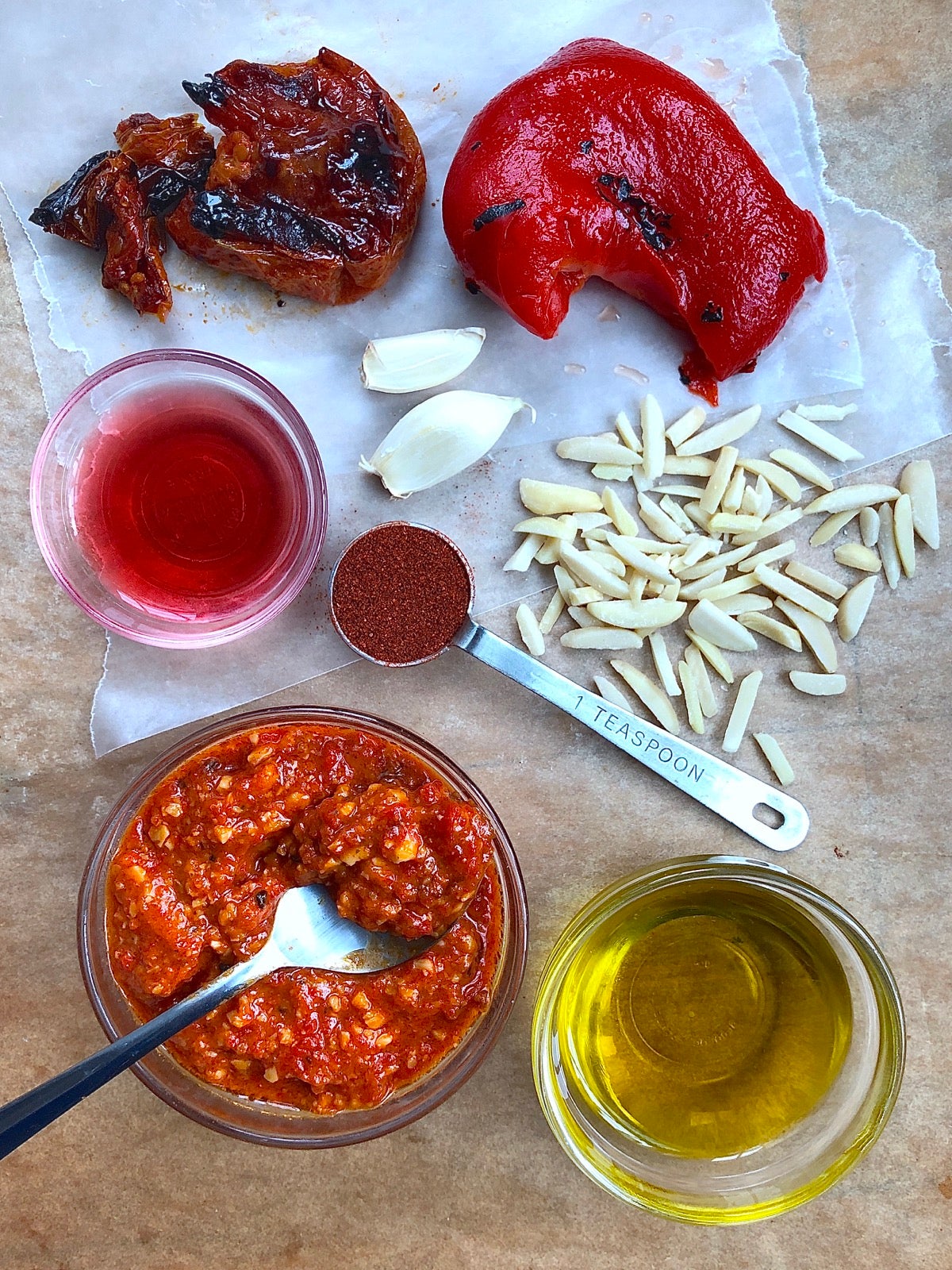
This bright red-orange Spanish sauce, often served with fish, is typically made from sun-dried red bell peppers, roasted tomatoes, garlic, nuts, and oil. Using smoked peppers (jarred, or your own) and adding smoked paprika gives the sauce a “charred” flavor that’s perfect for pizza. If you want the typical red-sauce look but with edgier flavor, try romesco.
Using a food processor or blender, process all of the ingredients until the sauce is as smooth as you like, anywhere from silky smooth to fairly chunky. Store in the refrigerator until ready to use. Yield: a scant 1 cup.
Baker’s tip: For added flavor, toast the almonds in a 350°F oven until golden brown, about 6 to 8 minutes.
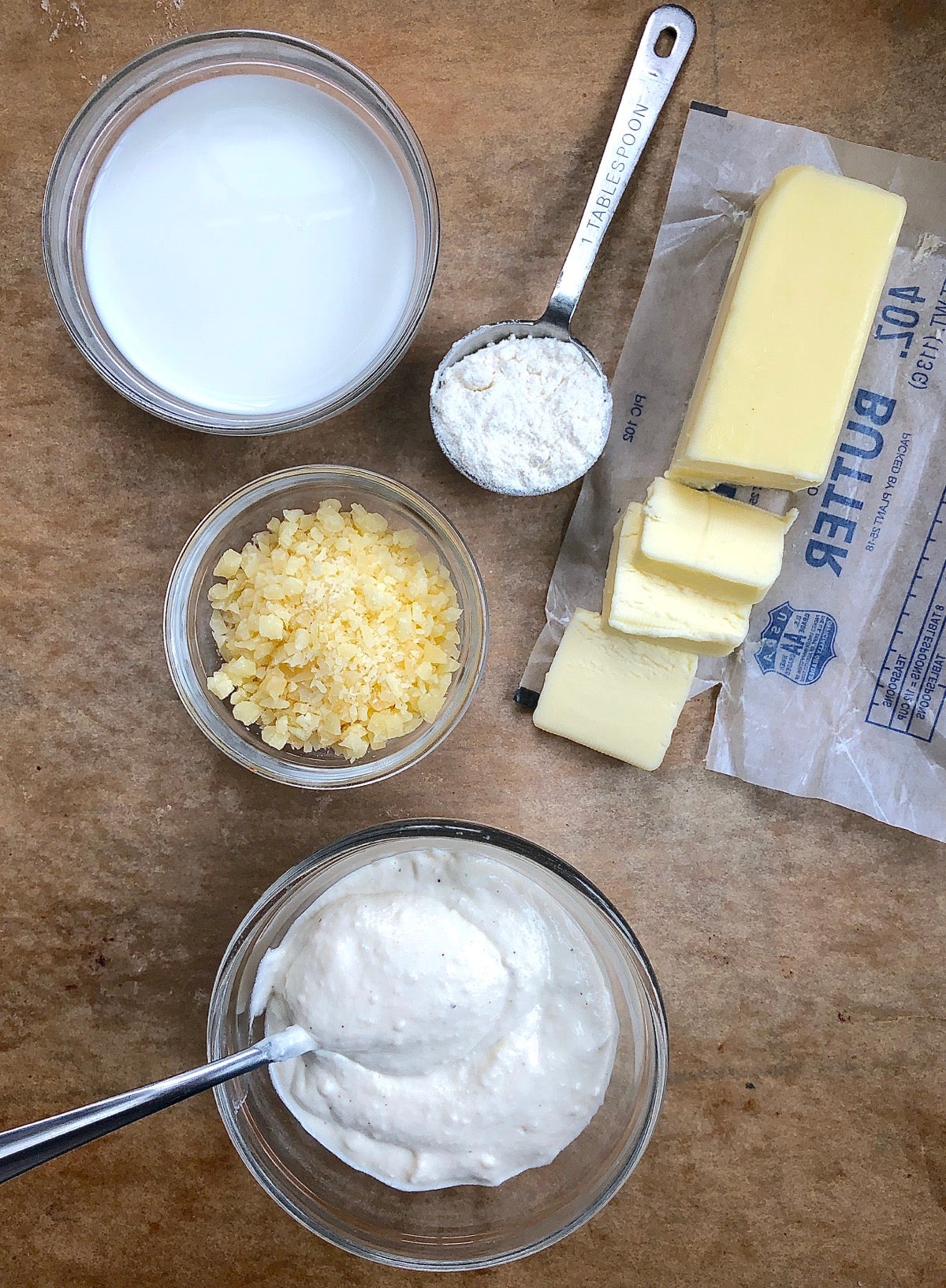
Step away from the red sauce and try a “white” pizza. While in most pizzerias this means simply substituting extra cheese for tomato sauce, I like topping our Recipe of the Year’s mozzarella base with this creamy white sauce, for extra flavor and richness. Add artichoke hearts and spinach, and the combination is happily reminiscent of baked spinach-artichoke dip — what’s not to like, right?
The following is pretty much a classic béchamel sauce with grated hard cheese stirred in at the end.
Melt the butter in a small saucepan and stir in the flour. Add the milk or half-and-half gradually, stirring all the while to prevent lumps. Stir in the salt, then the cheese; continue to cook over medium-low heat and stir until the cheese melts. Spread the warm sauce atop your crust, then add shredded cheese and your favorite white pizza toppings. Yield: about 3/4 cup sauce.
Baker’s tip: Don’t be tempted to substitute higher-fat milk or cream for the skim milk; between the butter and cheese this sauce is plenty rich, and adding more fat via your dairy choice simply makes it greasy.
Now, go forth and make Crispy Cheesy Pan Pizza (or your own favorite pizza) — with a brand new sauce!